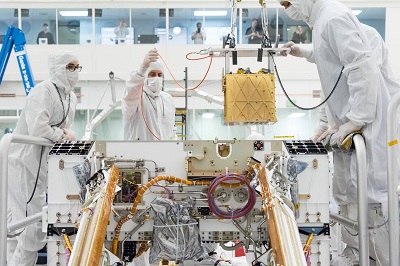Washington, (Asian independent) NASA’s oxygen-generating experiment that accompanied the Perseverance rover has successfully completed its mission on Mars, and may enable future astronauts landing on the Red Planet to produce oxygen for fuel and breathing, the agency has announced.
Developed by the Massachusetts Institute of Technology (MIT), a microwave-oven-size device called MOXIE (Mars Oxygen In-Situ Resource Utilisation Experiment), has generated oxygen for the 16th and final time aboard Perseverance rover.
“MOXIE’s impressive performance shows that it is feasible to extract oxygen from Mars’ atmosphere — oxygen that could help supply breathable air or rocket propellant to future astronauts,” said NASA Deputy Administrator Pam Melroy, in a statement.
“Developing technologies that let us use resources on the Moon and Mars is critical to build a long-term lunar presence, create a robust lunar economy, and allow us to support an initial human exploration campaign to Mars,” Melroy added.
MOXIE served as the first-ever demonstration of technology that humans could use to survive on, and leave, the Red Planet.
It produces molecular oxygen through an electrochemical process that separates one oxygen atom from each molecule of carbon dioxide pumped in from Mars’ thin atmosphere.
As these gases flow through the system, they’re analysed to check the purity and quantity of the oxygen produced.
Since Perseverance landed on Mars in 2021, MOXIE has generated a total of 122 grams of oxygen, equivalent to about what a small dog breathes in 10 hours.
At its most efficient, MOXIE was able to produce 12 grams of oxygen an hour — twice as much as NASA’s original goals for the instrument — at 98 per cent purity or better.
On its 16th run, on August 7, the instrument made 9.8 grams of oxygen.
An oxygen-producing system could help future missions in various ways, but the most important of them would be as a source of rocket propellant, which would be required in industrial quantities to launch rockets with astronauts for their return trip home.
Rather than bringing large quantities of oxygen with them to Mars, future astronauts could live off the land, using materials they find on the planet’s surface to survive.
The next step would be to create a full-scale system that includes an oxygen generator like MOXIE and a way to liquefy and store that oxygen.








